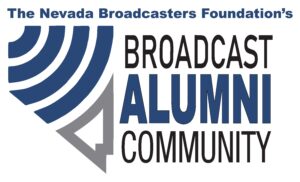This week, the FCC’s Notice of Proposed Rulemaking on Significant Viewing was published in the Federal Register, setting a comment deadline of May 14, with reply comments due by June 15. The NPRM asks for comments as to whether the FCC should update its rules for establishing whether or not a TV station is “significantly viewed” in a market other than the one in which it is located, and whether the FCC has the statutory authority to make changes to these rules that have largely been in effect since 1972.
A determination of significantly viewed status is important for determining whether a cable system or satellite television company will carry a TV station in areas that are not part of its home market. For FCC purposes, significantly viewed stations generally are not subject to the network nonduplication and syndicated exclusivity protections provided to home market stations – meaning that their programming that duplicates that of a local station need not be blacked out by the MVPD at the request of the local station that has the rights to such programming in that market. For copyright purposes, if a station has significantly viewed status, the MVPD pays at the low rates applicable to a local station pays for the compulsory copyright license needed to carry all of the programming of a television station. If the station is not significantly viewed, the much higher “distant signal” rate applies, giving the MVPD far less incentive to carry such stations.
The current rules define significantly viewed stations as those that were determined to have a significant level of viewing by television households receiving only an over-the-air signal. Most of the stations considered to be significantly viewed were determined to have that status in 1972 based on audience surveys conducted in 1970 and 1971. Changes to that list (adding or subtracting a station) can only be made upon a petition to the FCC showing whether, in the communities at issue, the station has achieved a set amount of viewing and circulation among viewers in those communities over a given period of time. A link to the current list is available here. Only over-the-air viewers are included in making this determination. The rules require two surveys by an independent professional audience survey company done at least a month apart. The FCC has also permitted the use of two quarterly Nielsen television reports reporting on the over-the-air listening in the communities at issue. The FCC identifies two principal issues that make these surveys difficult to use in the current television environment – (1) in many communities, there are very few over-the-air households to survey to determine if they are watching the out-of-market station, and in some communities Nielsen is not able to provide any information for over-the-air households, and (2) Nielsen is moving to a constant electronic measurement system that may not produce the quarterly average listening numbers on which the FCC relies, and may not break down the over-the-air households with the detail required by the current rules.
So the FCC asks whether there should be a new methodology to measure significant viewing and, if so, what that should be. The Commission puts forth only one alternative that has been proposed – using a technical showing of signal strength of the station to see whether or not viewers in the community can pick that station up over the air. The identified issue with that process is that the statute dealing with satellite carriage requires that significant viewing decisions must be made by assessing the shares of viewing hours and audience surveys. The FCC asks how a showing that a station provides technical service to the community meets that statutory standard. If that alternative does not work, the FCC asks for other suggestions as possible alternatives to the audience surveys currently used in assessing significant viewing.
The other issue in changing the rules lies in differences between the statutes applicable to significant viewing in the Communications Act and in the Copyright Act. In the Copyright Act, for purposes of determining which stations are required to pay the higher distant signal rate to get the “statutory license” that confers all the rights needed to retransmit all of the copyrighted materials in a television broadcast, significantly viewed stations are exempted from this higher fee – but the determination of who is significantly viewed is to be made by the FCC based on its rules in effect as of 1976. There is no similar statutory limitation on the FCC’s own determinations as to what stations are significantly viewed. Thus, if the FCC were to change its rules, for syndicated exclusivity and network nonduplication purposes, a station could be found to be significantly viewed, while for purposes of the statutory license, the same station could still be considered distant and any MVPD would have to pay higher fees. The FCC seeks comment on this reading of these two statutes.
The FCC also asks if it should change the definition of a network station for purposes of these rules. Network stations have to achieve higher audience circulation and share numbers to be considered significantly viewed than do independent stations. But, at the time that these rules were drawn up, there were considered to be only three networks – ABC, CBS and NBC. Fox stations are not considered to be networks for purposes of these rules. Because of conflicts with Copyright Act definitions, the FCC has declined to change that interpretation in the past, and is asking if it should do so now.
These and other very nuanced issues are set for comment in this proceeding. Carefully review all of the issues raised in the NPRM and, if they could affect your operations and competition, file your comments by the May 14 comment date.
Courtesy Broadcast Law Blog


